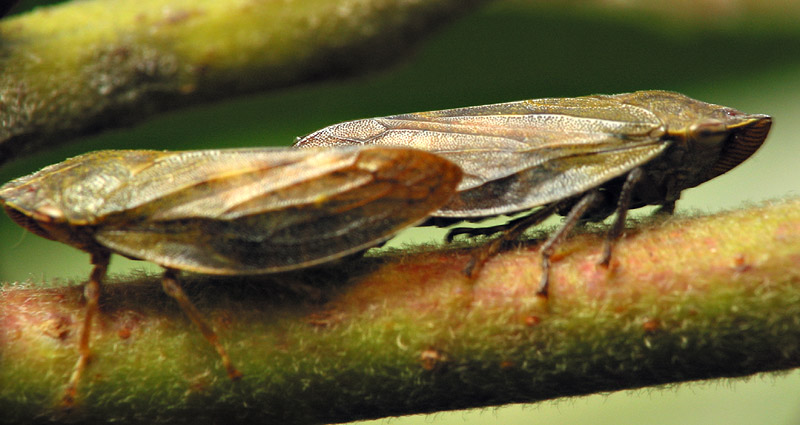
Aphrophora alni · alksninė cikada
- European alder spittle bug
- Erlenschaumzikade
- alkšņu putcikāde
- pienik olchowiec, pienik olszowiec
- en.wikipedia.org/wiki/Aphrophora_alni
- naturespot.org.uk/species/alder-spittlebug
- britishbugs.org.uk/homoptera/Aphrophoridae/Aphrophora_alni.html
The genus can be recognised by the keel running down the midline of the head and pronotum, and the species by the colour pattern with distinct white patches near the margin of the wings. Beware similarly-coloured specimens of Philaenus spumarius and variants of other Aphrophora.
They can be encountered from May through October on bushes and on several species of trees, especially willows (Salix), birch (Betula), alder (Alnus) and poplar (Populus). The adults primarily feed on deciduous trees, while larvae prefer herbaceous plants (dicotyledonous).
To lay eggs, the females migrate to the herb layers. The eggs overwinter and hatch the larvae in the following spring. The larvae live in stems and leaves of herbaceous plants inside the typical foam nest, that protects them against enemies and provide necessary moisture and temperature for their development. Aphrophora alni has only one generation a year.
‥
0 comments
Add a comment
Comments